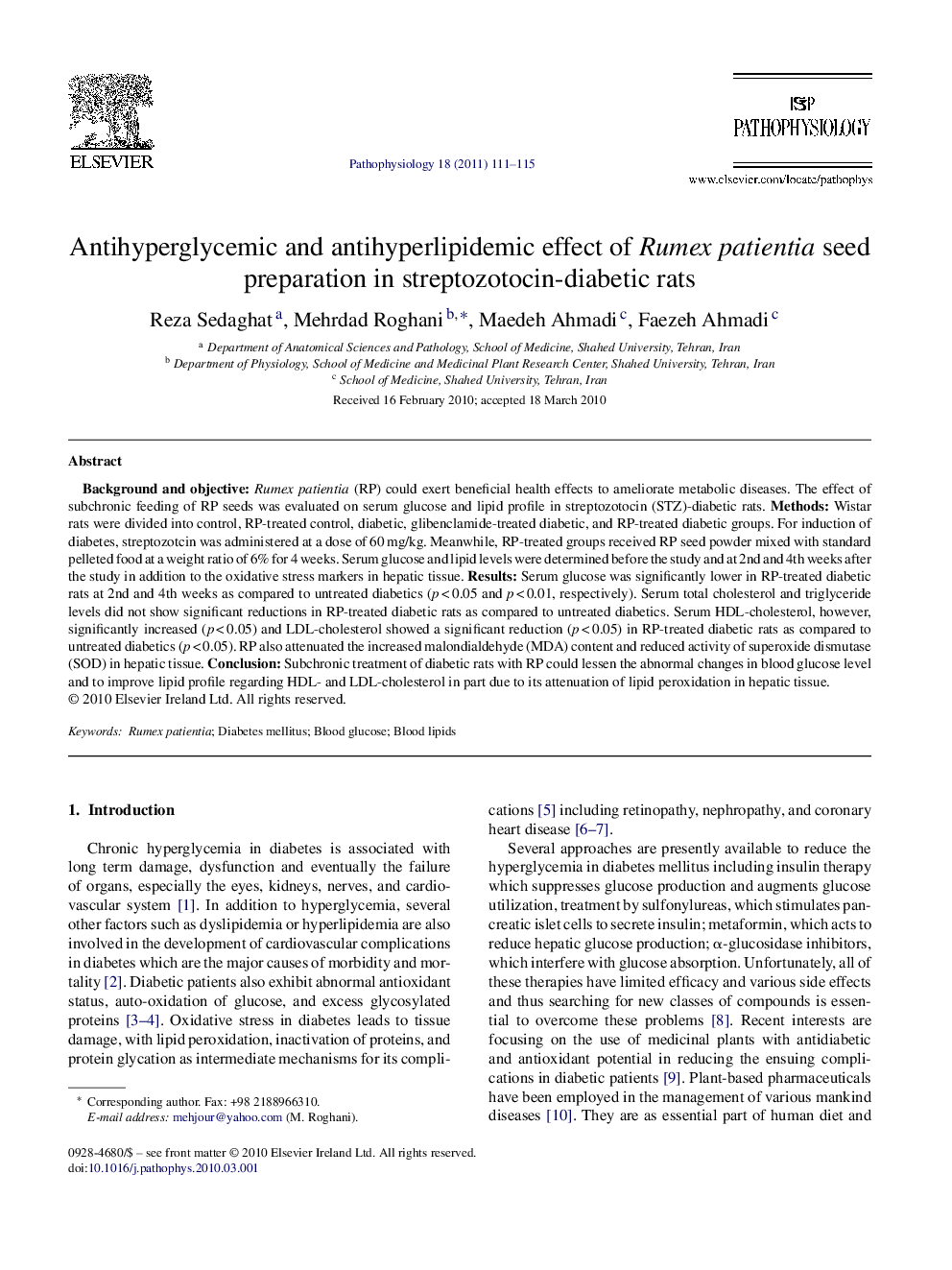| Article ID | Journal | Published Year | Pages | File Type |
|---|---|---|---|---|
| 4137273 | Pathophysiology | 2011 | 5 Pages |
Background and objective:Rumex patientia (RP) could exert beneficial health effects to ameliorate metabolic diseases. The effect of subchronic feeding of RP seeds was evaluated on serum glucose and lipid profile in streptozotocin (STZ)-diabetic rats. Methods: Wistar rats were divided into control, RP-treated control, diabetic, glibenclamide-treated diabetic, and RP-treated diabetic groups. For induction of diabetes, streptozotcin was administered at a dose of 60 mg/kg. Meanwhile, RP-treated groups received RP seed powder mixed with standard pelleted food at a weight ratio of 6% for 4 weeks. Serum glucose and lipid levels were determined before the study and at 2nd and 4th weeks after the study in addition to the oxidative stress markers in hepatic tissue. Results: Serum glucose was significantly lower in RP-treated diabetic rats at 2nd and 4th weeks as compared to untreated diabetics (p < 0.05 and p < 0.01, respectively). Serum total cholesterol and triglyceride levels did not show significant reductions in RP-treated diabetic rats as compared to untreated diabetics. Serum HDL-cholesterol, however, significantly increased (p < 0.05) and LDL-cholesterol showed a significant reduction (p < 0.05) in RP-treated diabetic rats as compared to untreated diabetics (p < 0.05). RP also attenuated the increased malondialdehyde (MDA) content and reduced activity of superoxide dismutase (SOD) in hepatic tissue. Conclusion: Subchronic treatment of diabetic rats with RP could lessen the abnormal changes in blood glucose level and to improve lipid profile regarding HDL- and LDL-cholesterol in part due to its attenuation of lipid peroxidation in hepatic tissue.
